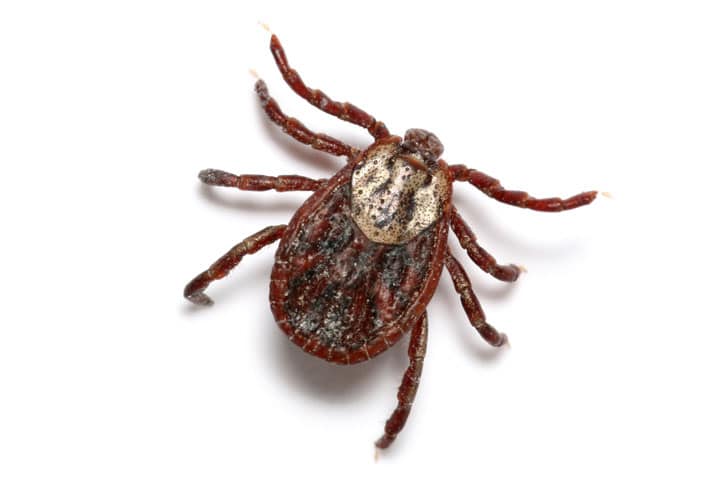
Babesiosis is caused by infection with a microscopic organism called Babesia which infects red blood cells causing anaemia, fever and splenic enlargement. There are a number of different species worldwide with Babesia Canis Canis being the most common in Europe and this is spread by tick bites by the species of tick called Dermacentor Reticulates. Until recently Babesia hadn’t been reported in the UK in dogs which hadn’t travelled abroad, however recently cases have been identified in dogs in Essex that haven’t travelled. Naïve ticks, which don’t carry the infection can become infected by biting a dog that has Babesiosis. Further transmission of the infection within the tick population can occur to eggs in the female tick’s reproductive tract resulting in infection of offspring.
Possible signs of Babesia infection include lethargy, anorexia, weakness, pale or yellow (jaundiced) gums and brown or orange urine, however these signs can also occur with diseases other than Babesiosis. Severe infection can result in death or Babesia infection can be subclinical in some patients where they show no signs of illness.
The diagnosis of this infection can be made by visualisation of the parasite within red blood cells under the microscope although infection can be missed by this method. A more accurate method of diagnosis is the PCR test where DNA of the infectious organism is extracted from blood samples.
Treatment involves using antibabesial drugs such as imidocarb dipropionate and blood transfusions are required for severely anaemic patients. Some patients ultimately require treatment with steroids. Dogs generally show clinical improvement within 24 to 72 hours of treatment but some may take as long as 7 days to respond and some dogs don’t survive, dependent upon the severity of infection.
The best approach to prevent infection hasn’t been established. The use of topical products to repel and kill ticks once attached is advised. There are a number of different products, which can help with this and the best thing is generally to ask your vet for advice – some agents are toxic for cats, for example. Very effective collars, spot-ons and tablets are now available. Frequent inspection of the skin and hair coat for ticks is important because it probably takes a minimum of 24 hours of feeding for Babesia transmission to occur.
When planning your Babesia prevention it is also important to think about providing cover for other potentially harmful diseases for example Toxocara canis, which can pose a risk to people, and the lungworm parasite Angiostrongylus vasorum. Your vet will be able to advise you on the most comprehensive way to do this.
Case Advice or Arranging a Referral
If you are a veterinary professional and would like to discuss a case with one of our team, or require pre-referral advice about a patient, please call 01883 741449. Alternatively, to refer a case, please use the online referral form